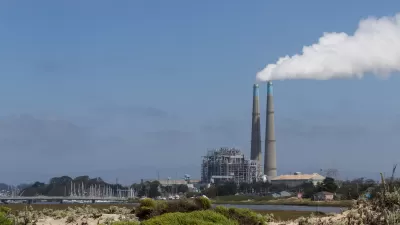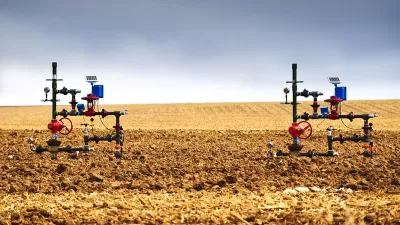Emissions of CO2 in the U.S. have fallen almost 13 percent since 2007 - "perhaps the biggest decline among industrial countries." Rather than the result of an enlightened policy shift, the drop has resulted from market forces, says Eduardo Porter.
"Who would have thought the United States would one day be a leader in cutting greenhouse gas emissions?" asks Porter. "Yet when President Obama talked about the nation’s energy revolution during his last month, he could have boasted that American emissions of CO2 had fallen almost 13 percent since 2007. It was perhaps the biggest decline among industrial countries, and substantially steeper than in Europe, which has been much more committed to combating climate change."
"Carbon emissions from the United States have never fallen this much," he adds, "not after the first oil price shock following the Arab oil embargo of 1973, nor after the Iranian revolution of 1979, when American drivers suddenly discovered the virtues of Japanese small cars and President Jimmy Carter installed solar panels on the White House to heat the water."
"What stands out most in this shift, however, is not environmental regulation or public concern about global warming but the price of energy and market-driven technological advancements. 'It wasn’t so much a policy shift that brought carbon emissions down,' said James Hamilton, an energy economist at the University of California, San Diego. 'It was irresistible market forces.'”
The shift from coal to gas-powered generators has been a major cause of the decline. But is the shift, which was largely due to the falling price of gas, sustainable? And, as coal use has grown at a rate "10 times that of renewables" since 2000, can other countries follow America's accidental lead in reducing emissions?
FULL STORY: A Model for Reducing Emissions

Planetizen Federal Action Tracker
A weekly monitor of how Trump’s orders and actions are impacting planners and planning in America.

Restaurant Patios Were a Pandemic Win — Why Were They so Hard to Keep?
Social distancing requirements and changes in travel patterns prompted cities to pilot new uses for street and sidewalk space. Then it got complicated.

Map: Where Senate Republicans Want to Sell Your Public Lands
For public land advocates, the Senate Republicans’ proposal to sell millions of acres of public land in the West is “the biggest fight of their careers.”

Maui's Vacation Rental Debate Turns Ugly
Verbal attacks, misinformation campaigns and fistfights plague a high-stakes debate to convert thousands of vacation rentals into long-term housing.

San Francisco Suspends Traffic Calming Amidst Record Deaths
Citing “a challenging fiscal landscape,” the city will cease the program on the heels of 42 traffic deaths, including 24 pedestrians.

California Homeless Arrests, Citations Spike After Ruling
An investigation reveals that anti-homeless actions increased up to 500% after Grants Pass v. Johnson — even in cities claiming no policy change.
Urban Design for Planners 1: Software Tools
This six-course series explores essential urban design concepts using open source software and equips planners with the tools they need to participate fully in the urban design process.
Planning for Universal Design
Learn the tools for implementing Universal Design in planning regulations.
Heyer Gruel & Associates PA
JM Goldson LLC
Custer County Colorado
City of Camden Redevelopment Agency
City of Astoria
Transportation Research & Education Center (TREC) at Portland State University
Camden Redevelopment Agency
City of Claremont
Municipality of Princeton (NJ)




























